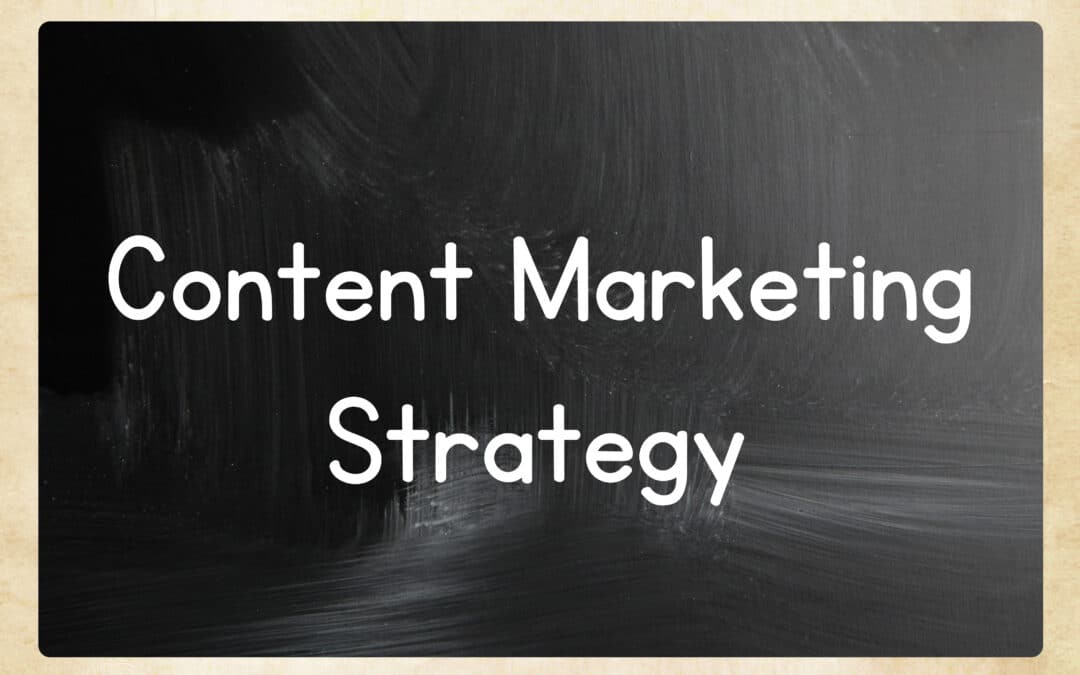Without a doubt, content creation can be one of the most enjoyable aspects of a content marketer’s job. Unfortunately, it can also be one of the most frustrating parts at the same time. The constant demand of having to create engaging social media content, insightful blog posts, short-form videos, informative e-newsletters, stunning graphics and more is time-consuming, overwhelming and even discouraging at times. Thankfully, there are some tips and tricks in the content marketing industry to make content creation easier and more effective, and one of these is repurposing content.
In this article we discuss content repurposing, why it’s important, best practices for repurposing content, how to repurpose different types of content marketing and provide examples of what repurposed content can look like.
What Does It Mean To Repurpose Your Content Marketing?
According to the HubSpot blog, content repurposing, also known as content recycling, is essentially “reusing existing content and presenting it in a new format to expand its reach and lifespan.” They go on even further to explain that:
“As a marketer, you definitely have a lot of work to do (and not enough time to get it done). You might also feel occasionally struck by writer’s block when it comes to creating fresh, unique content.
Given these challenges, you’re always searching for ways to make your job easier while continuing to produce high-quality content on a regular schedule. Fortunately, content repurposing is here to take some of the weight off your shoulders.
At first glance, content repurposing may seem like a way to cheat the system, but it’s not. You’re reworking your existing, high-quality content and presenting it in a different form on new channels.”
Why Is It Important To Repurpose Content Marketing?
HubSpot blog shares with us that there are a large number of advantages to repurposing your content marketing, among them being:
- Content repurposing saves time. This is by far one of the biggest and most beneficial rewards of repurposing content. Instead of having the immense burden to create numerous engaging social media posts, blog posts, e-newsletters and videos completely from scratch, you can build it around one main topic or idea and tweak the content to ensure it fits each medium or platform you’re working with. This brings with it the added benefit of preventing staff burnout and turnaround as well as helping to keep costs much lower for your business.
- It gives you an SEO boost. The basic idea behind this is that every single piece of content you create that is centered around similar keywords helps you to be recognized as an authority by search engines. You will be seen as a worthy resource that provides incredible value to your target audience.
- It helps you scale. Similar to helping you to save time, content repurposing helps you to scale (produce large amounts of high-quality content quickly and efficiently). You can use one piece of content as the basis for many different kinds of posts on different social media platforms.
- Helps you out of a creative rut. Creating content, whether it’s daily, weekly or monthly, can tax a content marketer’s creative juices. It can be challenging to come up with content that is consistently relevant, creative, useful and engaging for your target audience. Content repurposing makes the process of creating material for each platform you utilize simpler and much more straightforward.
- Puts content in front of a new audience. It isn’t likely that your audience follows you on every single platform you create content for. While there certainly may be a small amount of overlap, it’s much more likely that each platform will have its own set of unique followers. Repurposing content allows you to take a piece of information presented to one audience and share it another way with another audience.
Best Practices For Content Repurposing
There are different strategies you will use depending on what type of content marketing you choose to repurpose and which platform it will be on, but according to Backlinko, there are in general some best practices to keep in mind when repurposing your content marketing.
- Use evergreen content pieces. Evergreen content is “content designed to be relevant and beneficial over the long term.” The rationale to focus on this type of content over more timely pieces is quite simple — evergreen content is designed to stand the test of time, and with a few adjustments, can be repurposed any week, any month or any year. It can even be repurposed multiple times over the years. Contrast this to a blog post about a very specific current event (an Apple announcement about new technology for example). While it may be interesting in the moment (and definitely has its place in your marketing strategy), because of how quickly technology evolves, it’s unlikely to be something that you can use to turn into different types of content once it’s a distant memory in your audience’s minds.
There are several ways to look for engaging evergreen content to repurpose, but for the most part, it’s a good idea to rely on analytics of some sort. Looking at your content’s analytics shows you what content of yours is already performing well. This is important, as no one wants to repurpose content that has previously flopped. Google Analytics or YouTube analytics are excellent places to start when you’re trying to identify what content would be good to repurpose. It’s also possible to go through your posts one-by-one and take note of any material that continues to be relevant to your target audience, though this step can take quite a bit more time, depending on how far back you go.
- Adapt the content to each format. Though it would certainly be convenient, you cannot simply take one piece of content posted on one platform and repost it as-is to another. Your repurposed content needs to be adapted to each platform you are posting it to. You can’t, for example, take your entire blog article and paste it into your company’s Facebook feed. You can, however, write a one-to-two sentence summary of the topic and include the link to the entire post on your website. Additionally, you could make a short video for your Instagram page describing the post (either with text or audio) and include the link to your website in your bio. Every single piece of content you repurpose should be changed to some degree before it’s posted to another platform or before it’s reposted in the same format (such as repurposing an existing blog post).
- Split content into pieces. When you’re adapting your content to each format, you do have the ability to directly quote some of the original source, you’ll just need to do it in an abbreviated form. Take a meaningful quote from a blog post or webinar for example. This verbiage can be copied directly and made into a post for Facebook or Instagram, either in an image or in the copy. You can even post clips of your YouTube presentation on other social media platforms, just make sure it’s a short clip and that it links to the original content.
- Go visual. One of the best ways to repurpose content is to take existing text content and make it visual. This pertains mostly to blog content. Taking content from your blog and using it to create videos or graphics is an excellent way to adapt your content to use it across channels.
Repurposing Specific Types Of Content Marketing
- Blog posts. Blog posts are some of the best places to get high-quality content for your other content marketing endeavors. Information from blog posts can be used to create a YouTube video, design infographics to use on your various social media platforms and to use on your company’s podcast. The possibilities are quite endless with blog posts.
As mentioned previously, the entire text from your blog posts won’t directly be shared on other platforms. Instead, choose some of the most important points or quotes to turn into a short-form video, use in a social media post or to create an infographic.
- Social media. While it is possible to repurpose social media, you cannot simply take one social media post and share it in the same form on another platform. That being said, there are several ways to repurpose social media content. One way is to use the same graphic but create different copy for each platform. In this example, you only have to create one graphic and one topic, but they will vary slightly. This is important in case your audience follows you on more than one social media platform.
Another way that you can repurpose social media content is to post user-generated content (UGC). UGC is content that relates to your product or service and is produced by someone other than your company (most likely one of your consumers). If you find that someone on social media has featured your brand in a positive light, share the content they have produced. This could be in the form of a video they created or a Google review. Whatever it looks like, make sure to give them credit. This form of repurposing content is relatively simply as it often doesn’t require you to create anything at all.
One last way to repurpose content for your social media is to create new infographics, updating the statistics or information in them in the process. Then you can use the same format of copy you used previously, but with new, updated information.
- Webinars or videos. Similar to a blog post, when you repurpose content from webinars or videos you won’t use the entirety of the video. Instead, you will pull quotes or interesting facts to use in a social media post or an infographic. However, there is one instance that you may use quite a lot of the information from one of your videos or webinars. In this case you would take the information presented in the webinar or video and create a blog post about it. While this likely won’t be a word-for-word copy of the audio, it will cover much of the same information and may even expand on it. You could also turn the information into a podcast episode.
- Podcasts. In the same vein as webinars and videos, information from podcasts can be used to create social media posts, infographics or even a blog post. You could also record the podcast to create a short video for social media or a longer one for a platform like YouTube.
- Older blog content. It’s also possible to repurpose older blog content and repost it with updated statistics, links, photos and keywords. This is an excellent strategy to make sure that your older content continues to drive traffic to your site. Additionally, if someone happens to find an older blog post or it has been linked in some other content on another page, the link will be redirected to a new, updated copy.
Examples Of Repurposed Content

Studying examples of how other companies repurpose content can help show you how to do it correctly.
Perhaps one of the easiest ways to understand how to repurpose content marketing is to see how it’s done in action. Here at Three Girls Media, we repurpose content weekly. Much of our repurposed content stems from our new blog post that goes live every Monday. We use this blog post to provide content for our social media platforms and our e-newsletters. In addition, every Wednesday we repost older blog content, which also turns into content for social media posts.
To provide further example, I recently wrote a blog post about using persuasive writing in content marketing. Content from this post went live throughout the week as follows:
- Facebook page: “Check out this recent Three Girls blog post by our Copy Editor, Heather Cooper! You’ll learn a lot of valuable information about persuasive writing in content marketing.”
- LinkedIn page: “In her recent blog post, Three Girls’ Copy Editor, Heather Cooper, shares her expertise on persuasive writing in content marketing and how to get started.”
- Weekly e-newsletter: “When it comes to content marketing strategies, many people will focus on topics like hashtags, search engine optimization and keywords. While those factors will strongly impact who sees your content marketing, they don’t address what people do after they see your content. That is where persuasive writing comes in.If you want to convert your audience into customers, your business will need to employ persuasive writing techniques to convince them that your business is the right one for them.
Check out the article from the Three Girls’ blog by Three Girls Media Copy Editor, Heather Cooper, to find out how you can implement persuasive writing in your marketing content.”
Being innovative and creating content daily doesn’t mean you have to reinvent the wheel every single time. Repurposing content for your content marketing is a smart and efficient way to build content for your social media platforms, drive traffic to your website and keep your employees from burning themselves out.
Do You Need Help With Repurposing Your Content Marketing?
If you need help with your content marketing strategy, including repurposing content, contact us at Three Girls Media. Our team of experienced marketing and PR specialists is eager to help you develop a strategy that is uniquely your own. We offer a complimentary 30-phone consultation with our CEO, Erika Taylor Montgomery, to get you started.
Special Offer:
Sign up for a complimentary consultation during December and receive an Annual Marketing Planning Guide valued at $475! We offer a 30-minute phone consultation with our CEO, and can answer your questions and discuss your specific marketing needs - no strings attached. Call 408-218-2391 or contact us today to arrange your consultation!



